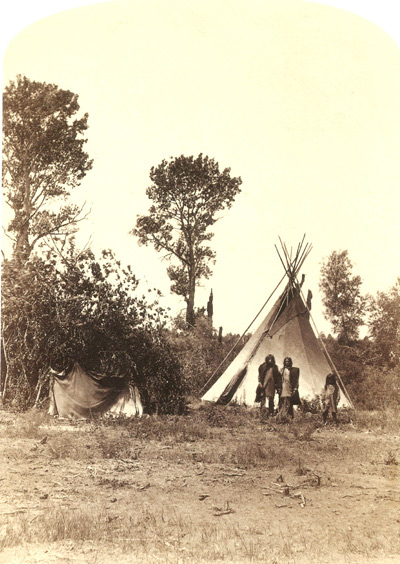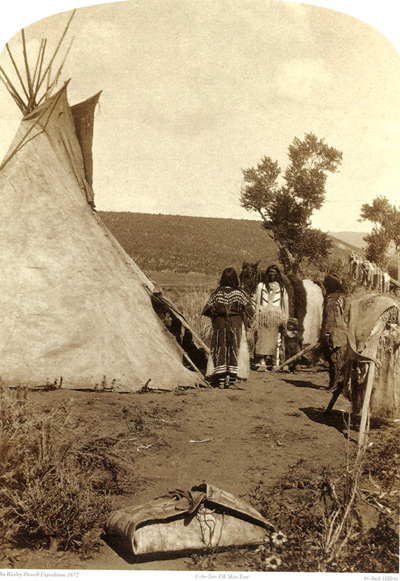John Jack Hillers: Utah Tribes - An Exhibition
 Tuesday, October 11, 2011 at 11:05PM Tweet
Tuesday, October 11, 2011 at 11:05PM Tweet By Donna Poulton
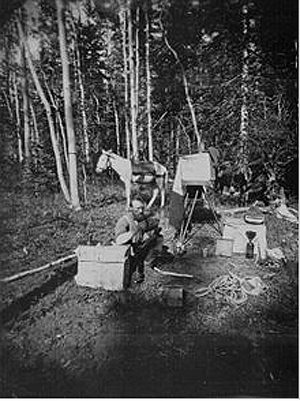 John Jack Hiller working with photography equipment. Credit: Utah State Historical Society
John Jack Hiller working with photography equipment. Credit: Utah State Historical Society
A rare collection of 116 albumen photographs taken between 1872-1875 opens on October 15th, 2011 at the Bingham Gallery/Thunderbird Foundation in Mt. Carmel, Utah. This extraordinary collection of images by John [Jack] Hillers was purchased by the Binghams in 1998. Hillers produced a number of sets to be used by John Wesley Powell to lobby Congress for more money for his expeditions.
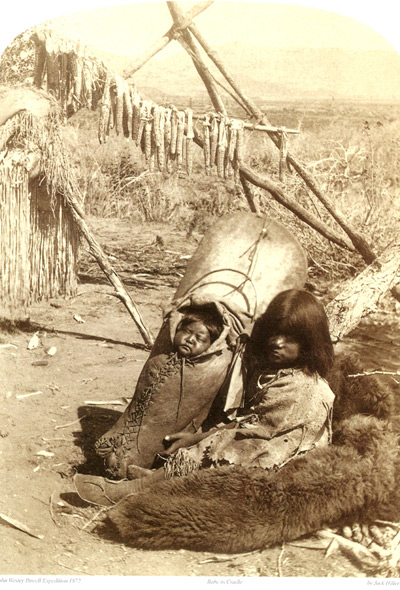 Credit: Bingham Gallery/Thunderbird Foundation
Credit: Bingham Gallery/Thunderbird Foundation
Among the annals of the exploration of the West, few stories rival that of Powell’s heroic exploration of the Colorado River. Among the eleven original crew members he hand picked were E.O. Beaman (dates unknown) from New York, enlisted as the official photographer, and John (Jack) Hillers (1843-1925), whom Powell had met by coincidence in Salt Lake City and signed on to “pull an oar.”
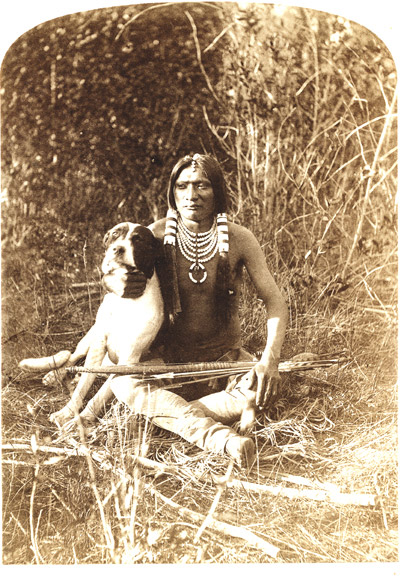 Credit: Bingham Gallery/Thunderbird Foundation
Credit: Bingham Gallery/Thunderbird Foundation
E. O. Beaman’s photography equipment, weighing roughly a thousand pounds, included a large camera, portable dark room, tripods and large, very fragile glass plates used to make photo negatives with the colodium wet-plate method.
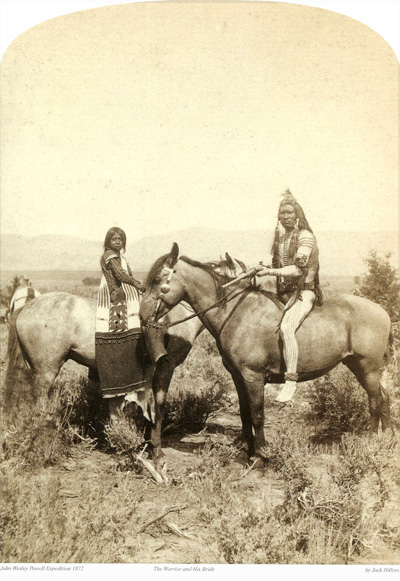 Credit: Bingham Gallery/Thunderbird Foundation
Credit: Bingham Gallery/Thunderbird Foundation
The oarsman, Jack Hillers, recently discharged from the U.S. Army as a sergeant, was interested in Beaman’s work and soon acted as his unofficial assistant. Beaman’s historic photographs were to become the first images ever taken of the Green and upper Colorado River. Having survived canyons with such names as Desolation, Labyrinth and Cataract, aptly named by Powell, the group left the river to winter in Kanab, Utah. Beaman left the survey in January 1872, after a dispute with Powell.
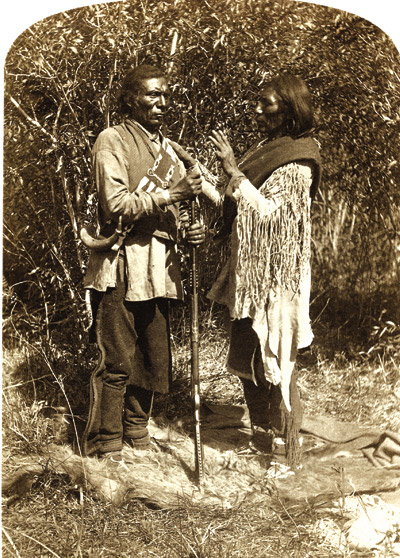 Credit: Bingham Gallery/Thunderbird Foundation
Credit: Bingham Gallery/Thunderbird Foundation
Powell put Hillers in charge of photography for the remainder of the expedition.
John Hillers would go on to work for the U.S. Geological Survey for the next thirty years as a photographer and became one of the most important American photographers of the nineteenth century. He was especially interested in portraits of American Indians and worked for the Department of Ethnography under Powell’s direction to document indigenous peoples before their way of life disappeared.
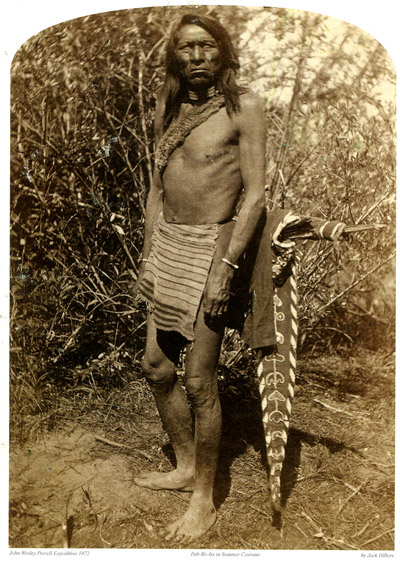 Credit: Bingham Gallery/Thunderbird Foundation
Credit: Bingham Gallery/Thunderbird Foundation
Utah photography historian, Nelson Wadsworth described Hillers' work with the Paiutes:
“In the fall of 1872 Powell set out to photograph the Kaibab Paiutes, who at the time were settled in their winter camp at the mouth of Kanab Canyon, not far from the Mormon settlement of Kanab. Earlier attempts to photograph the Paiutes had been unsuccessful because the Indians feared the camera. But now, accompanied by southern Utah Mormon leader Jacob Hamblin, the so-called “buckskin apostle” to the Indians, Powell met with the leader of the Kaibab Paiute band, Chuarumpeak. With Hamblin’s reassurance, the Paiutes were at last convinced the camera would do them no harm, and they gave Hillers the Indian name of “Myself in the Water,” symbolic of his camera being able to capture their own reflections in the water in his magic wooden box.
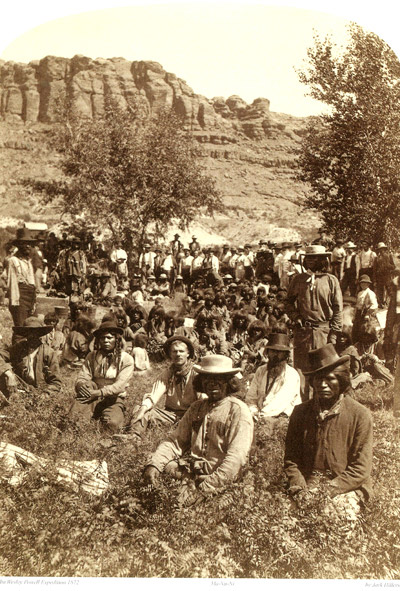 Credit: Bingham Gallery/Thunderbird Foundation
Credit: Bingham Gallery/Thunderbird Foundation
Thus began a long association of mutual trust between Powell and the Paiutes, which freely opened access to Hillers’ cameras. Many of the pictures in the Utah Tribes Exhibit are the result.”
 Credit: Bingham Gallery/Thunderbird Foundation
Credit: Bingham Gallery/Thunderbird Foundation

